The letter Yā (ي) is one of the fundamental letters in the Arabic alphabet, positioned at the end of the alphabetical sequence. It is characterized by its distinctive shape and clear pronunciation, making it especially suitable for early childhood language instruction. However, it is important for learners to understand that the forms of the letter Yā vary depending on its position within a word—whether at the beginning, middle, or end. This lesson presents these forms in a simplified yet professional manner, accompanied by illustrative examples to support learners in developing confidence in both reading and writing.
Interactive Activities for Teaching the Forms of the Letter Ya
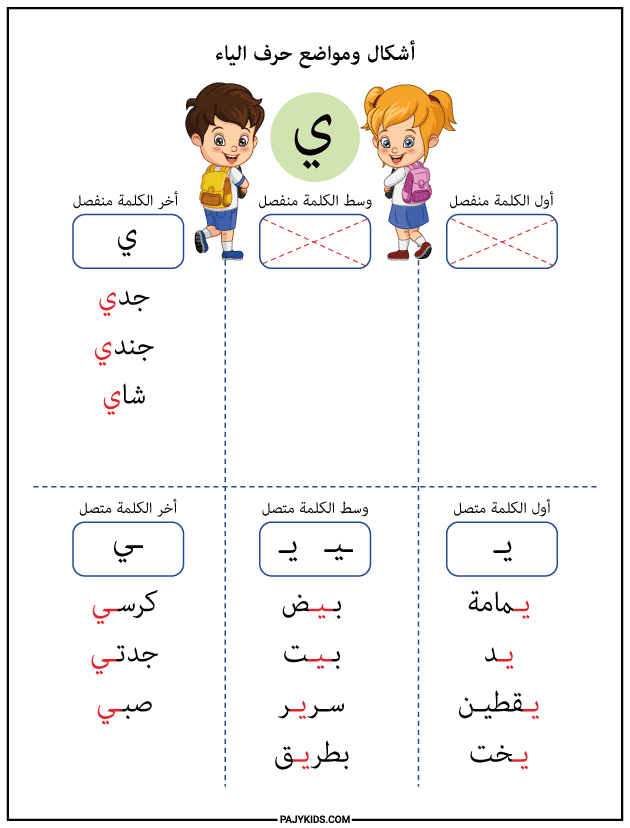
- Yā at the Beginning of a Word
When Letter Yā appears at the beginning of a word, it connects only to the following letter and is written as: “يـ”.
Examples: Yamāmah (يمامة), Yad (يد), Yaqṭīn (يقطين), Yakht (يخت).
This is one of the most frequently occurring forms in everyday vocabulary, and it is recommended that students practice it early on.
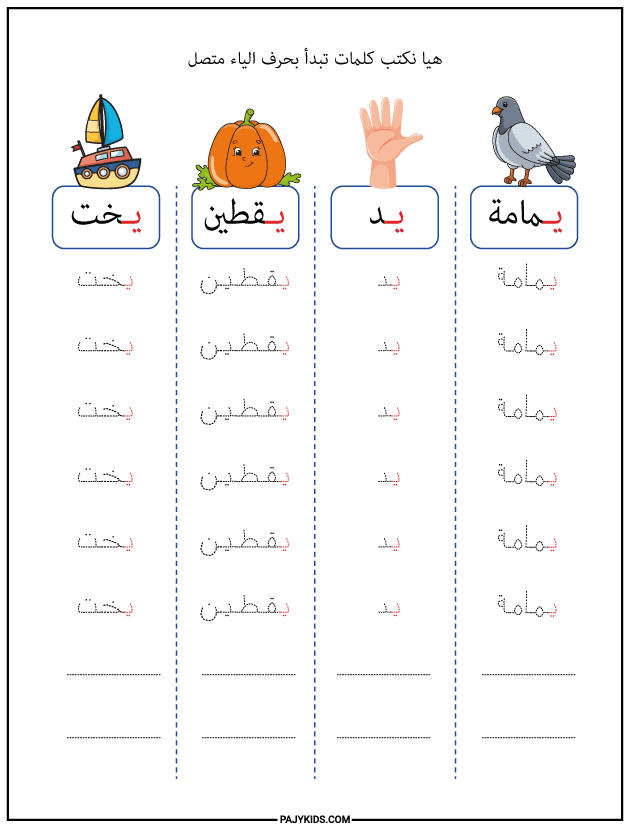
- Yā’ in the Middle of a Word
In the medial position, Letter Yā connects to both the preceding and the following letters, taking the form: “ـيـ”.
Examples: Sayyārah (سيارة), Fīl (فيل), Bayḍ (بيض), Sarīr (سرير), Baṭrīq (بطريق).
This form appears seamlessly integrated within the word. Regular practice is essential for learners to internalize this shape, especially given its visual similarity to other letters such as Bā’ (ب), Nūn (ن), and Tā’ (ت).
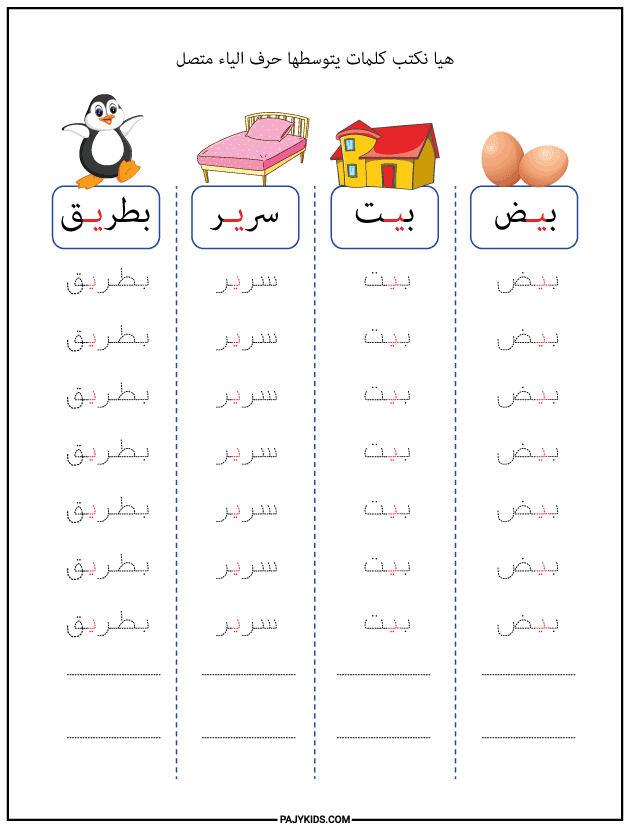
- Letter Yā at the End of a Word (Connected)
When Letter Yā appears at the end of a word and is connected to the preceding letter, it is written as: “ـي”.
Examples: Kursī (كرسي), Nabī (نبي), Malī (ملي), Ghanī (غني), Nādī (نادي).
This form is written fluidly along the baseline, with a single dot beneath it. It is among the most common forms of Yā’ in texts, making it crucial for students to distinguish it from the alif maqṣūrah (ى), which appears similar but has no dots.
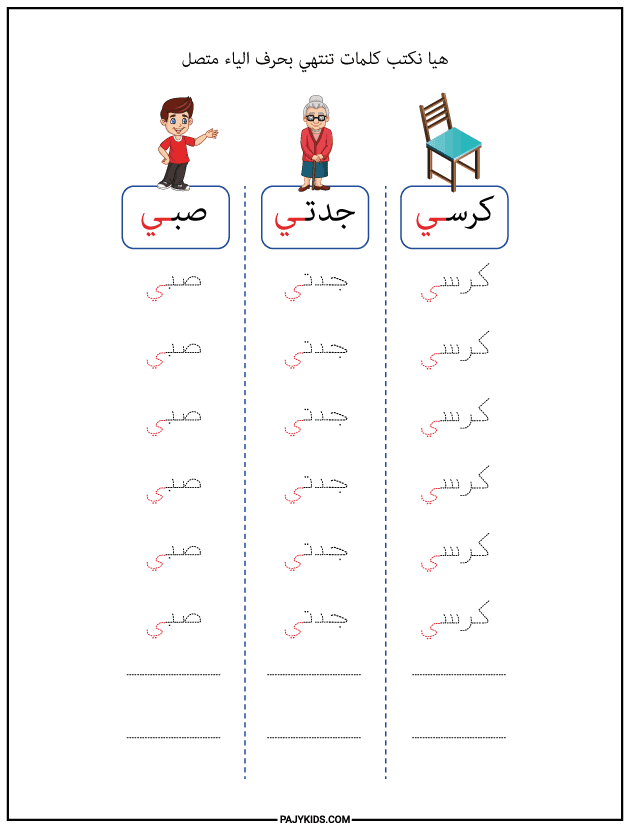
- Letter Yā at the End of a Word (Isolated)
If Letter Yā follows a letter that does not connect to it, it appears in its isolated form: “ي”.
Examples: Jaddī (جدي), Jundī (جندي), Shāy (شاي).
This form is clearly recognizable and resembles the isolated shape of alif maqṣūrah (ى), but it can be differentiated by the presence of two dots beneath Yā’. Recognizing this distinction is a foundational skill necessary for accurate reading and writing.
Conclusion
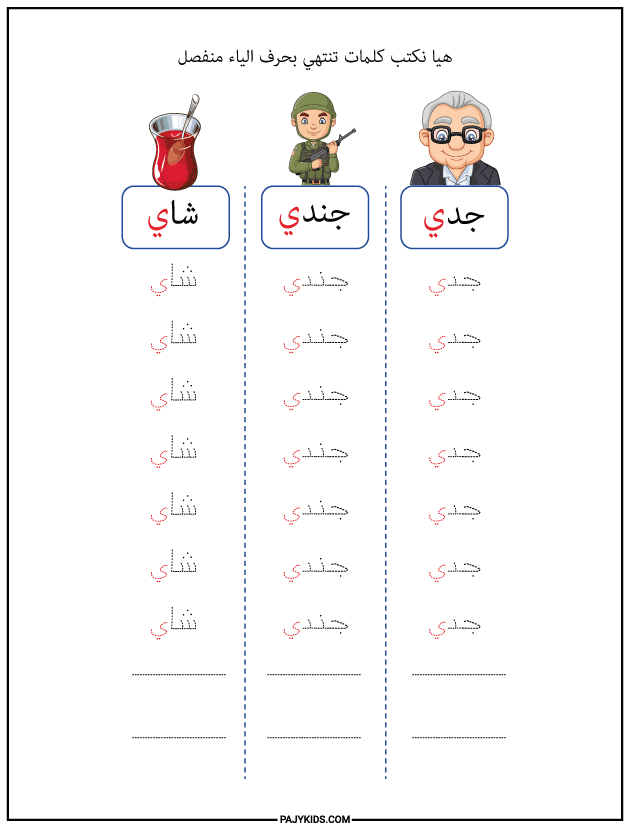
Mastering the forms of the letter Ya significantly enhances Arabic handwriting and supports the learner’s ability to differentiate between visually similar letters. It also strengthens the skill of cursive writing and fosters visual recognition of letters in context.